Art & Exhibitions
Per Kirkeby Revels in Flamboyant Visuals and Dark Future at Windsor Gallery
Lush landscapes combine with a sharp sense of mortality and vulnerability.
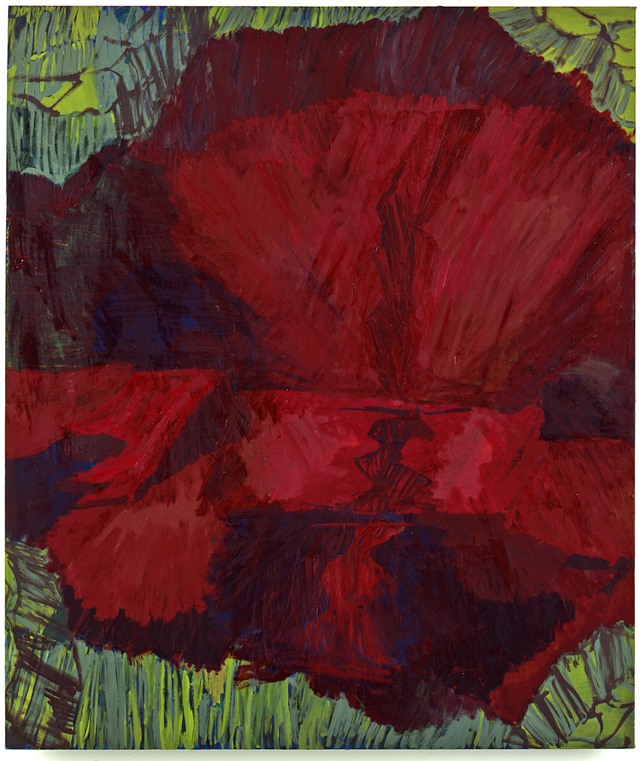
Lush landscapes combine with a sharp sense of mortality and vulnerability.

Brian Boucher

Danish artist Per Kirkeby once flirted with Fluxus, participating in performances with Joseph Beuys and Nam June Paik before breaking up with the loose movement that prized collaboration and aimed to edge away from the market.
In doing so, he told group honcho George Maciunas, “I do not really understand what [Fluxus is] all about. I don’t want to be a member because, basically, I am a painter. I am attached to material and flamboyant things.”
Flamboyant is one word you might choose to describe the setting for “Per Kirkeby: Echo of the Light,” a small show at the Windsor Gallery, which is part of a luxury residential development on a 416-acre island in Vero Beach, Florida, 150 miles north of Miami.
Kirkeby’s storied career includes representing Denmark at the Venice Biennale in 1976, inclusion in two Documenta exhibitions thereafter (1982 and 1992), and a retrospective at London’s Tate Modern in 2009. Now 77, he shows with international powerhouse Michael Werner Gallery, whose director Kadee Robbins organized the show along with independent curator Olivier Berggruen.
The artist hasn’t caught on in quite the same way in the States as in Europe; when the Phillips Collection, in Washington, DC, brought about forty of his works there in a 2012 exhibition, the museum billed it as the most extensive showing of his work to date in the US. American cinemaphiles, though, may know his work from the opening title sequences, with landscape video and abstract animations, that he created for films by Lars van Trier, including Breaking the Waves (1996), Dancer in the Dark (2000), and Antichrist (2009).
The works at Windsor—a handful of paintings and 11 monotypes, all measuring up to about seven feet high—are mostly quasi-abstract landscapes, though they all assume a vertical format, and they’re marked by plenty of his customary earthy reds and greens.
In Herbst (Autumn), from 1998, a burst of crimson dominates the canvas, like an emblem for the changing colors of fall leaves. It almost edges out bits of bright green with vertical striations that suggest blades of grass. An untitled canvas from 2005, meanwhile, resembles a cross-section of the earth; a vertical shape near the top suggests a tree sprouting from a horizontal line, below which lung-like shapes and networks of lines resemble spreading roots.
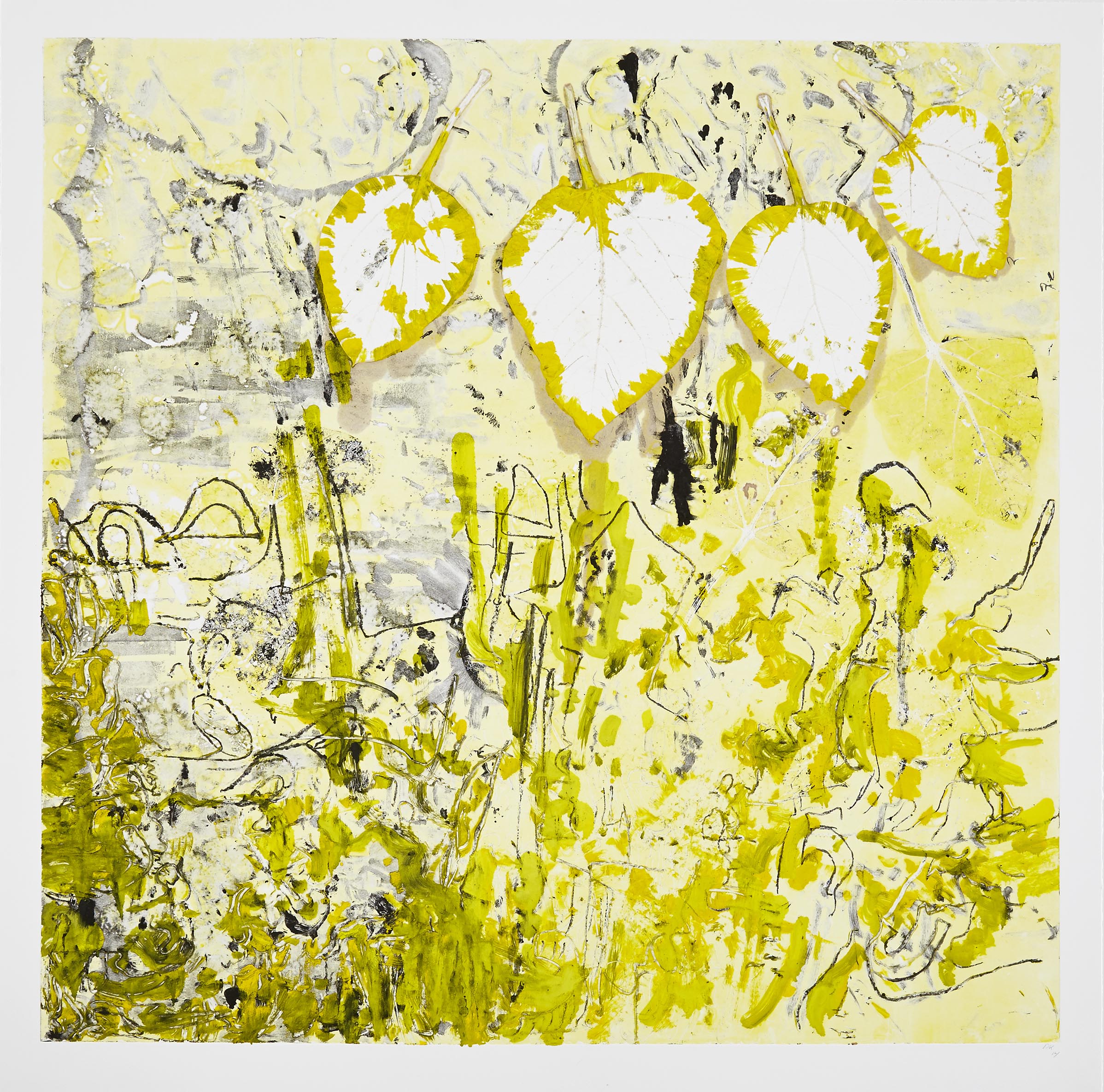
Per Kirkeby, Untitled, 2014.
Photo by Jason Wyche.
More clearly representational is an untitled monotype from 2014 that includes several yellow leaves floating near its top. Completely abstract, by contrast, is Wut (Rage), from 2006, in which a central zone of black is overlaid by slashing brushstrokes and what seem like fingernail scratches in yellow and green.
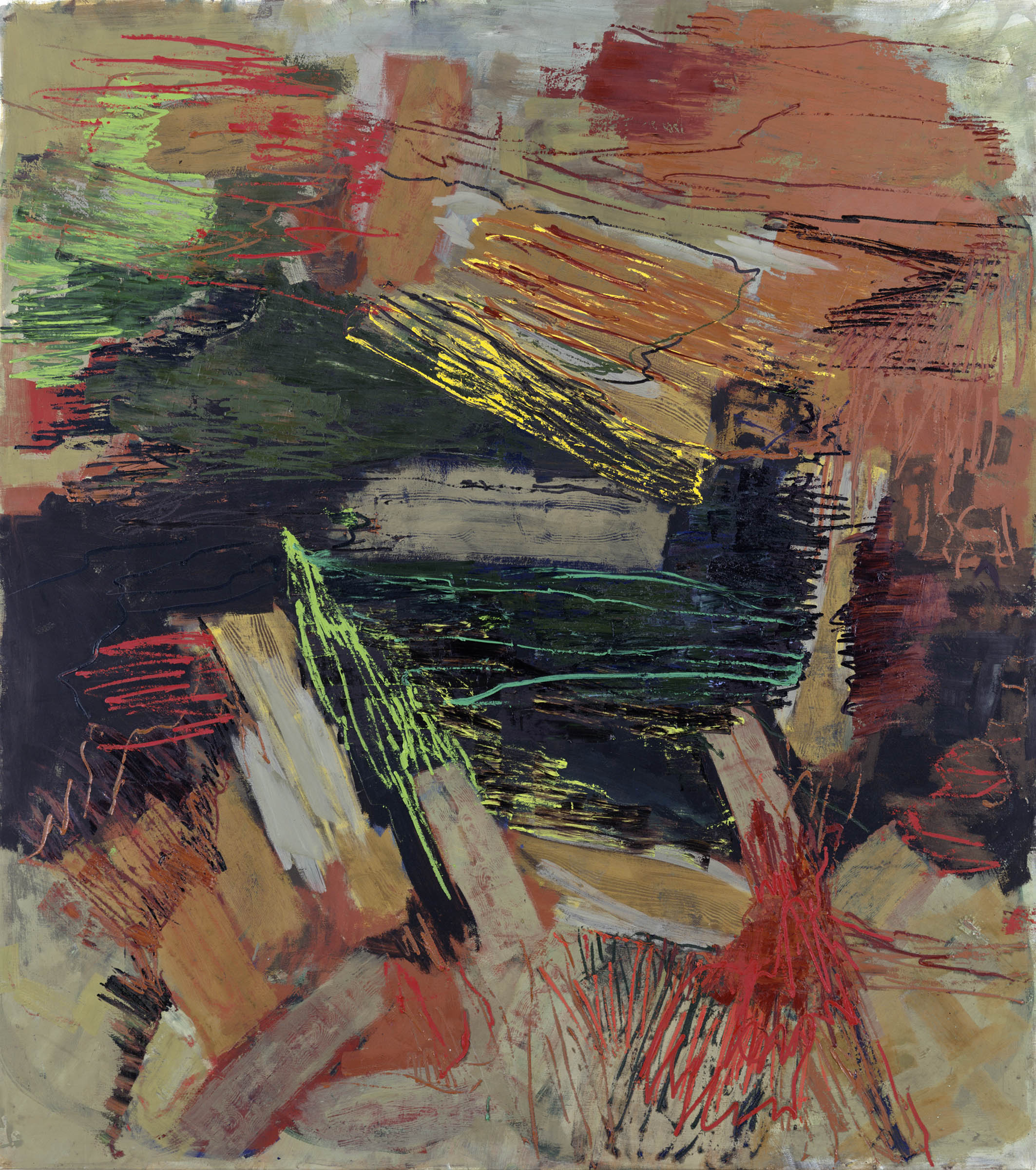
Per Kirkeby, Wut (Rage), 2006.
Photo by Lothar Schnepf.
Also rageful is Inferno IV (1992), which is defined by patches of forest green and rust brown. The contrast between the earthy color scheme and the fiery title seems like an ironic comment on global warming, as though the trees suggested by the verdant hues are headed to a hellish future.
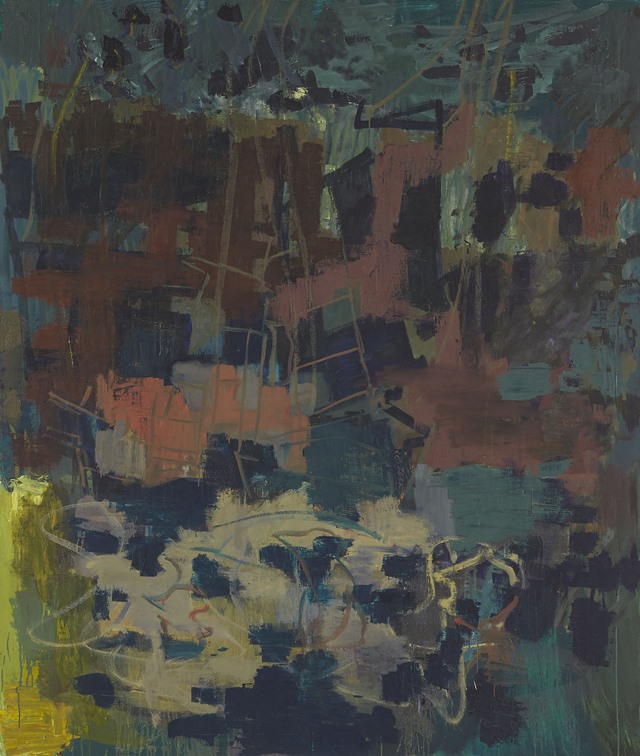
Per Kirkeby, Inferno IV, 1992.
Photo by Jason Wyche.
Taking in the environment surrounding the gallery, though, the future seems bright, at least for some lucky residents, as you survey the golf course, the equestrian facilities, the fitness center with its 82-foot swimming pool, and the gun club.
Windsor was established by Torontonians Hilary and Galen Weston, the owners of Selfridges, the English department store chain. Forbes estimates their net worth at $9.2 billion, which places them as the second-wealthiest family in Canada and 131st in the world. Their collection includes works by Christo and Jeanne-Claude, Peter Doig, Alex Katz, Ed Ruscha, and Kiki Smith. The gallery, founded by their daughter, Alannah, is overseen by Hilary Weston and has featured shows of artists such as Doig, Jasper Johns, Beatriz Milhazes, and Gert and Uwe Tobias.
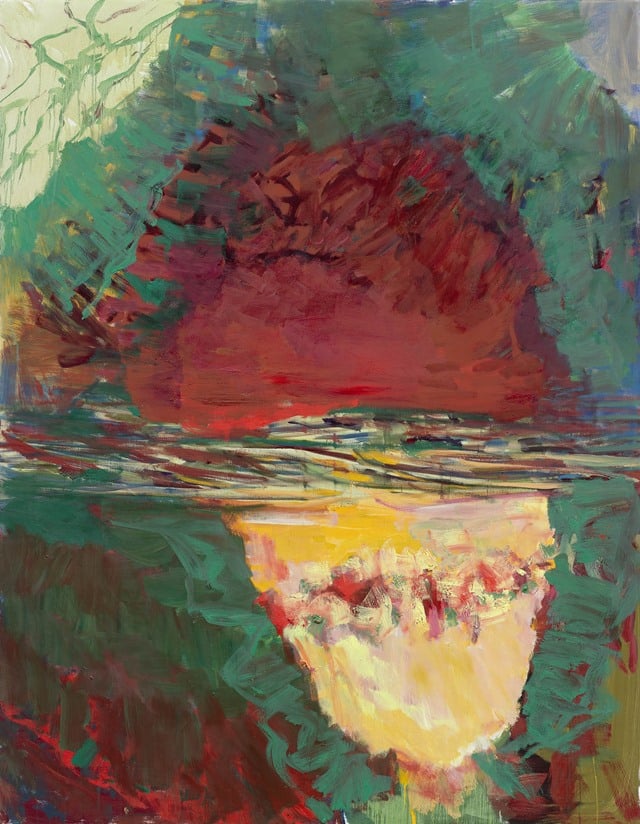
Per Kirkeby, Untitled, 2011.
Photo Jörg von Bruchhausen.
The Westons celebrated the opening of the show last Friday evening, during Art Basel in Miami Beach. An opening party for a few dozen guests included dinner prepared by Mads Reflund, co-founder of hugely influential Copenhagen restaurant Noma, which has routinely topped the World’s 50 Best Restaurants list.
Many of those in attendance had just come from Miami Beach, which had seen dramatic downpours and flooding the previous night. Miami Beach is often flooded even on sunny days due to its geological character, as Vanity Fair pointed out in the recent doomsday article “Can Miami Beach Survive Global Warming?” As it happens, Kirkeby studied geology, and he and his commentators have often discussed his work in terms of sedimentary layering, and of the transformations wrought by both gradual and sudden geological change.
Studying the dramatic power of such tectonic shifts seems to have instilled a sense of vulnerability in Kirkeby. A lullaby-like poem by the artist, printed on a gallery wall, begins, “We get older, we get older.” He ends by comparing himself to a glass, fragile and “tumbling like a skittle / in slow motion.”
That fragility, he points out in an essay in the exhibition catalogue that almost functions as an elegy, characterizes not just the individual, but the current state of the world itself. Following the common observation that trees shed their leaves in the fall, he writes,
The history of a species is not very long either. A couple of cosmic weeks. All the leaves finally fall. And many cosmic years go by and finally the tree itself dies. What will become of the world?
“Per Kirkeby: Echo of the Light” is on view at the Gallery at Windsor, 3125 Windsor Boulevard, Vero Beach, Florida, through April 29, 2016. The gallery is open to the public by appointment three days a week.